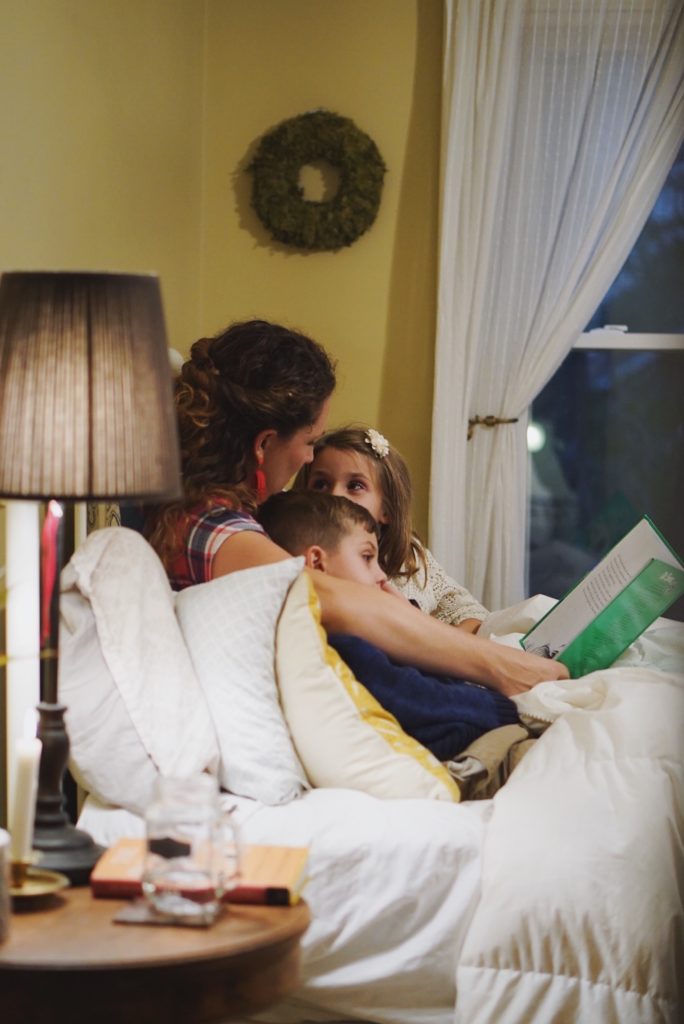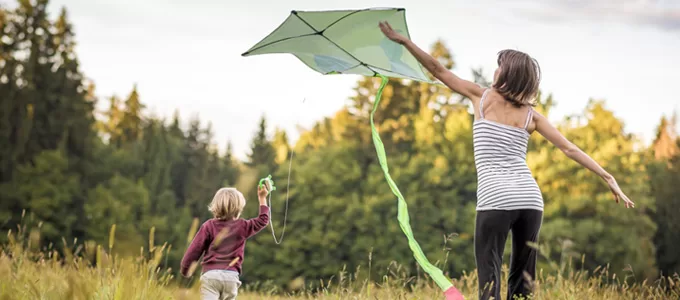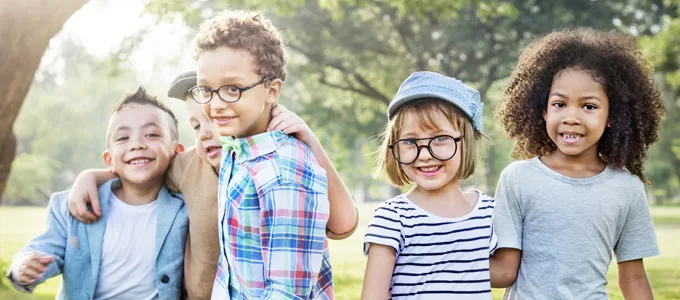By Aimee Laurence
Mindfulness is good for all of us. It helps us be present as parents, choosing better responses instead of going with the first thing that comes to mind. It’s also good for children because it helps them pay attention, stay calm when they feel upset, and improves their decision making. In order to teach these skills to your children, you need to first establish your own practice so you can teach what you know. You also want to keep it simple so your children can understand that at its core, it means being aware of your thoughts, feelings, and what’s happening around you.

The purpose of teaching mindfulness to your children is to allow them to gain better awareness of their experiences, both inner and outer, to understand their thoughts and emotions, and to be better at controlling impulses. With that being said, you need to manage your own expectations, because it’s impossible that you’ll eliminate tantrums, or completely calm down your child – they are kids and it’s normal for them to be loud and exuberant. With this in mind, here are 8 different ways you can start introducing mindfulness to your children at home.
1. Use a bell.
An easy start for children to learn mindfulness is to pay attention to the sounds around them. Use a singing bowl, a bell, chimes, or even a phone app with sounds. Make a sound and tell your children to listen carefully until they can’t hear it anymore – usually 30 seconds to a minute.
2. Practice breathing.
It’s hard to tell children to focus on their breathing, but you can do an exercise with a breathing buddy. Tanya Keeting, a journalist at Academized and Elite Assignment Help, explains: “Tell your child to take a stuffed animal and lie on their back with their ‘buddy’ on their belly. This way, they will focus their attention on their buddy rising and falling as they are breathing in and out. This is an easy way for young children to practice regular breaths.”
3. Have mindful walks.

Start going on regular walks with your children and make the focus of it about noticing things. Walk through your neighborhood or a nearby park and try to notice things you haven’t seen before. Also, for one whole minute of the walk, spend it in complete silence and pay attention to everything you can hear around you – birds, insects, a neighbor, and more. These are useful ways to practice mindfulness with your children that they will enjoy.
4. Start a gratitude practice.
Gratitude is one of the primary aspects of mindfulness and it’s important to teach our children how they can appreciate what they have in their lives, the people around them, and their environment. Children will often want things they don’t have, like toys, candy, or whatever new thing their schoolmates have. Set aside a time every day, like at dinner, when everyone in the family shares one thing they are grateful for.
5. Do a ‘Spider-Man’ meditation.
If you turn a meditation into a superhero game, your kids are sure to be more interested in trying it out. Spider-Man meditation helps your children use their ‘spidey senses’ like their favorite superhero so they think extra hard about what they can smell, hear, see, and taste in the moment. It’s fun and engaging for kids of all ages.

To implement it, all you need is a room where you can all sit or lay down and then get them to pay attention to sounds and sights. They can say: “My Spidey senses are saying…” or something similar that would make it more fun for them.
6. Use a weather report.
Encourage your children to talk about their present feelings like a weather report. Is it sunny, rainy, calm, windy, stormy? This helps children think about their current emotions without over analyzing everything they feel. It helps them realize that feelings can be like weather – something you can’t change, but you can change what you do about them.
To set this up, you can simply talk to them and tell them that they can express their feelings this way. Children will probably prefer this, because it’s a more interesting and comfortable way to say things.
7. Start a mind jar.
According to Rita Hayworth, a mom blogger at State of Writing and Paper Fellows, “a mind jar is similar to a snow globe – full of little pieces that you can shake up and create a storm. Once you set it down, watch it calmly, focusing on your breathing, and watch the disturbance settle back down into calm, like your mind.”
8. Eat mindfully.

There are great mindful eating exercises that you can do, like mindfully eating chocolate or a snack, and this is something great that you can do with your children.
The important thing is to keep it simple and approachable for your children. If you give them different and fun ways to be mindful, they’re more likely to stick with at least some of them.
Aimee Laurence, a teacher at UK Writings and Essayoo, loves to share her insights about education, parenting, and alternative learning which she has learned over the years. She also tutors on these topics at Boom Essays.
Here is another article on 3 simple ways to find mindfulness in every day. It’s easier than you think.
Other related pages:







